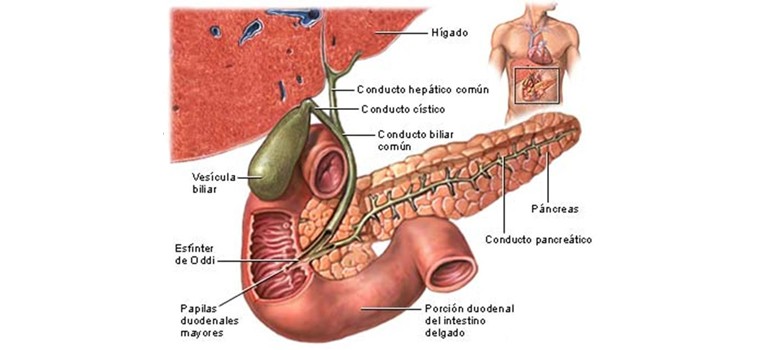Most common Gall bladder problem is because of gallstones. Removal of gall bladder is most common way of treatment of symptomatic gall stones. Not removing gall bladder may worsen infection with bursting of Gall Bladder.
Preferred technique now a day is laparoscopic Cholecystectomy (key-hole surgery or minimally invasive surgery) which reduces recovery time and is less painful then open surgery.
The gallbladder is located in the right upper abdomen beneath the liver and store digestive juice produced by the liver (Bile). After eating bile is released from Gall Bladder into small intestine that helps the body to digest fat.
A gall stone is a lump of hard material formed inside the gall bladder. These stones may block the flow of bile out of the gall bladder causing it to swell.
It is uncertain why some people form gall stones but certain people are more at risk than others–
People at risk of Gall Bladder Stones-
- Family history of gall bladder stone
- Excess weight
- Rapid weight loss
- High fat/low fiber diet
- Increased risk with age
- American Indians and Mexican Americans
- Diabetes
- Excess estrogen (pregnancy, birth control pills)
Symptoms of Gall Bladder Stones-
Many people with gallstones have no symptoms (silent stones).
Symptoms usually follow after fatty meals –
- Abdominal bloating
- Intolerance of fatty food
- Abdominal Pain
- Nausea, vomiting
- Indigestion, belching
- Occasionally fever
- Jaundice if Gall stone blocks common bile duct
Diagnosis Of Gallstones-
- Thorough history and abdominal examination may give clues.
- Ultrasonography of abdomen is most sensitive and specific test to diagnose.
- Certain blood tests are advised for signs of infection, jaundice, or pancreatitis.
- Sometimes CT scan HIDA scan or ERCP (endoscopic retro cholangio pancreatography) may be required.
Treatment of Gall Bladder Stones–
If Gall Bladder stone is not causing any symptom it can be kept on watchful waiting with low fat high fiber diet (Beans , bran, cereals ), more fruits and vegetables and regular exercise.
For Symptomatic stones medicines such as antibiotics and pain killers are given for short term relief. Permanent cure to problem is removal of the gall bladder & not the stones only as Gall stone may form again and by removing infected gall bladder we are safeguarding against a lot of complications like Cholecystitis & Pancreatitis.
Laparoscopic Cholecystectomy-
Open surgery requires a long cut through skin and muscles to expose the area to be operated. Laparoscopic or key hole surgery is less invasive.
Laparoscope is inserted into the patient’s body through a small cut in the skin at the belly button. Specially designed surgical instruments are placed through other small incisions.
Surgeon performs the operation watching the magnified images on the monitor via video camera.
New buzz in laparoscopic surgery is single Port Access surgery- an advanced Minimally Invasive Surgical procedure in which the surgeon operates laparoscopically almost exclusively through a single small cut at Navel rather than multiple cuts. No stitching is required to close the opening.
Advantages Of Key Hole Surgery–
- Small scar
- Less pain
- Shorter hospital stay
- Early return to work
Risks
- Anesthesia risks
- Bleeding
- Infection
- Internal organ injury
- Blood vessel injury
- Vein or lung blood clotting
All of these risks are present in open surgery.
To conclude we can say the treatment of gall stones is the removal of the gall bladder not the stones only and there is no ill effect of Gall bladder removal on normal digestion. Contrary to common belief you can eat fatty meal even after Gall Bladder surgery. Fat is digested with the help of bile which is secreted from liver. Gall Bladder merely stores it.
Doing timely gall bladder surgery we may safeguard against a lot of Complications like Cholecystitis & Pancreatitis. Laparoscopic gall bladder surgery is gold standard.




